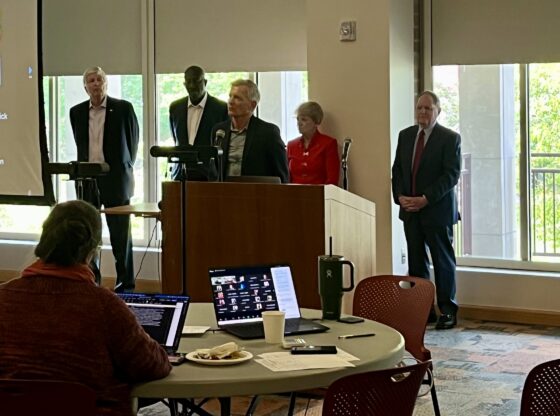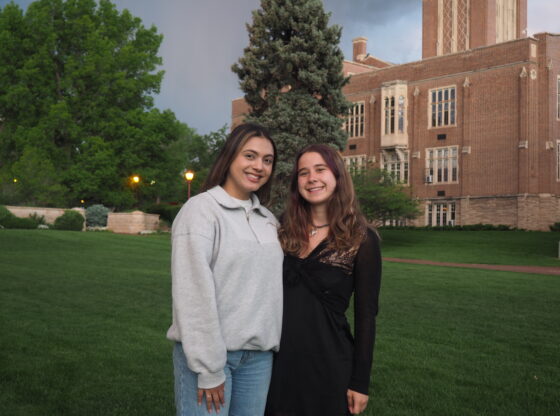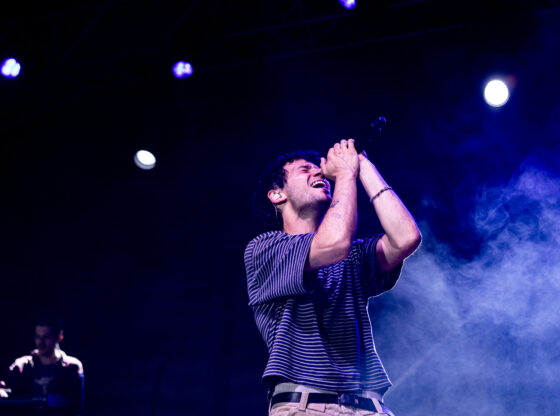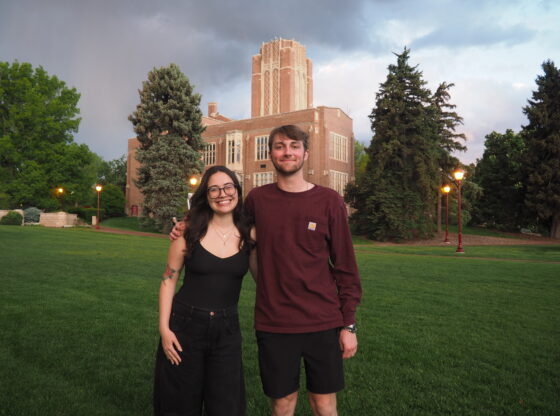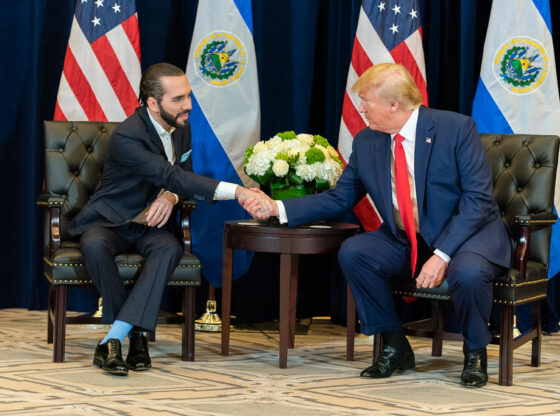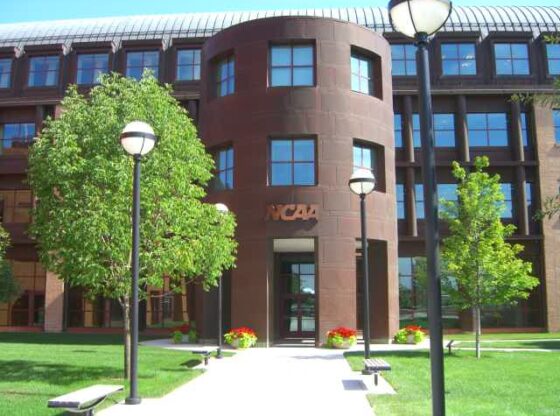Among test tubes marked “Caution: Radioactive Materials” and high-intensity microscopes, in an inconspicuous building 15 minutes north of the University of Denver campus, DU faculty and students study the characteristics of human cells that will help them decode the cause of conditions such as cancer, diabetes, Alzheimer’s and Lou Gehrig’s diseases and Down syndrome.
The building is home to the Eleanor Roosevelt Institute at the University of Denver, a biomedical and genetic research facility that houses eight laboratories and dozens of scientists who are working to “seek an in-depth understanding of the process of life-especially human life-and through this understanding, work toward unlocking the mysteries of human health and disease,” according to their mission statement.
“As people live longer, it is more and more urgent to address [these diseases],” said Matt Yeingst, vice president of development for ERI. “The research done here effects everyone.”
ERI was established in 1961 as an independent research facility and merged with DU in May 2003 because of economic difficulties. The union of ERI and DU has proved to be beneficial for both institutions, said Yeingst.
“Our research methods haven’t changed, but our scientists are now able to teach at DU,” he said. The institute is a part of DU’s Division of Natural Sciences and Mathmatics.
In addition to the crossover opportunities and financial support, the merger provided an opportunity for DU students that is unique to Colorado and maybe beyond, said Yeingst. A number of undergrad students work in the labs, he said, an unparalleled benefit that will increase over time.
“Most labs only have graduate students,” said Yeingst. “This opportunity helps separate DU from other institutions. It’s great for the scientists because they have more bodies to do more work-they’re talented, smart students, not just fillers.”
DU senior Bree Ruppert has been volunteering in the lab since early June. ERI Director David Patterson has been helping her on her honors thesis, researching a neurological disorder called AICA-Ribosiduria, according to Ruppert.
Ruppert said that the results of her work in Patterson’s laboratory will most likely be published with the results of similar studies, a distinction that, according to Yeingst, is rare for an undergraduate student.
“Bree is a good model for what we hope to see happen more and more,” said Yeingst. “She’s had a really substantial experience.”
Ruppert said that her experience has extended her education into real-life application.
“I have learned so much and I have had the chance to apply a lot of the information that I have already studied.”
ERI’s first medical breakthrough came in 1956 when founder Theodore Puck, now 89, determined the correct lethal dose of radiation for cancer therapy. Prior to the completion of this research, said Yeingst, people were receiving 1,000 times the necessary dosage.
Since then, the institute has participated in other ground-breaking studies that have contributed to the relatively small institute’s “world-class reputation,” said Yeingst.
Patterson and ERI colleague Katheleen Gardiner contributed to the sequencing of Chromosome 21 as the only American scientists, said Yeingst. Their study had a significant impact on the Human Genome Project, a 13-year study to identify and sequence all of the 20,000- 25,000 genes in human DNA.
The scientists work only with mice. They inject mutated DNA into fertilized mouse eggs, which are subsequently implanted into foster mouse moms, said Yeingst.
Mice are beneficial, he said, because the cells’ reception of DNA is similar to a human’s.
Currently, ERI scientists are working on projects involving cancer prevention, inhibiting the onset of Lou Gherig’s disease and studying the link between obesity and Type 2 Diabetes.
ERI scientists only do basic animal research, but with their results, they are able to collaborate with laboratories across the nation that conduct clinical research. Yeingst said that the institue does not “work in a vacuum.”
“We’re the building blocks,” said Yeingst. “Our work has to take place first.”



